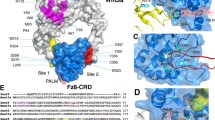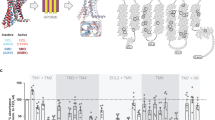Abstract
Wnt proteins signal via cell surface receptors termed Frizzleds. Frizzleds display many properties characteristic of members of the superfamily of G-protein-coupled receptors, including heptihelical hydropathy plots; an exofacial N-terminal region that is glycosylated; a cytoplasmic C-terminal region that includes canonical motifs for phosphorylation by protein kinase A, protein kinase C and casein kinase II; cytoplasmic domains that couple to heterotrimeric G proteins, as evidenced by a GTP-shift in receptor affinity; receptor-mediated responses sensitive to depletion of specific G protein subunits and receptor-mediated responses sensitive to bacterial toxins that target G proteins. Evidence from a variety of developmental systems demonstrates Wnt-Frizzled (Fz) signaling via pathways other than the Wnt/β-catenin pathway linked to transcription controlled by Lef/Tcf. Prominent among these additional pathways is a Wnt-Fz pathway regulating intracellular [Ca++] and cyclic GMP levels. The essential role of heterotrimeric G proteins in Wnt-Fz signaling is highlighted.
Similar content being viewed by others
Author information
Authors and Affiliations
Corresponding author
Additional information
Received 2 May 2003; received after revision 9 June 2003; accepted 24 June 2003
Rights and permissions
About this article
Cite this article
Wang, HY., Malbon, C.C. Wnt-frizzled signaling to G-protein-coupled effectors. CMLS, Cell. Mol. Life Sci. 61, 69–75 (2004). https://doi.org/10.1007/s00018-003-3165-x
Issue Date:
DOI: https://doi.org/10.1007/s00018-003-3165-x




